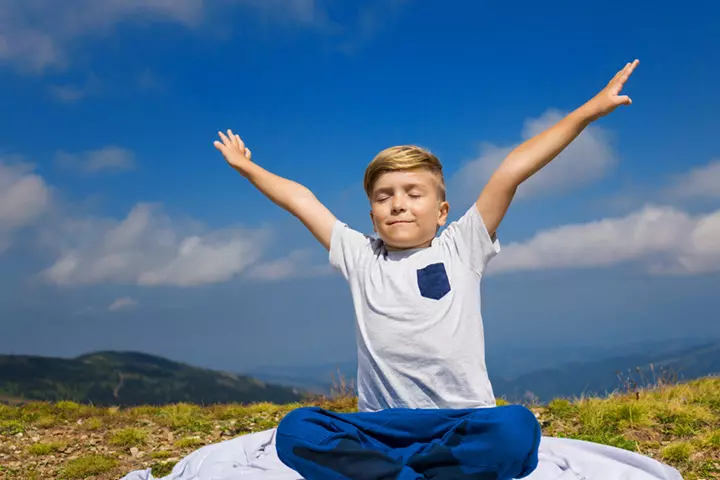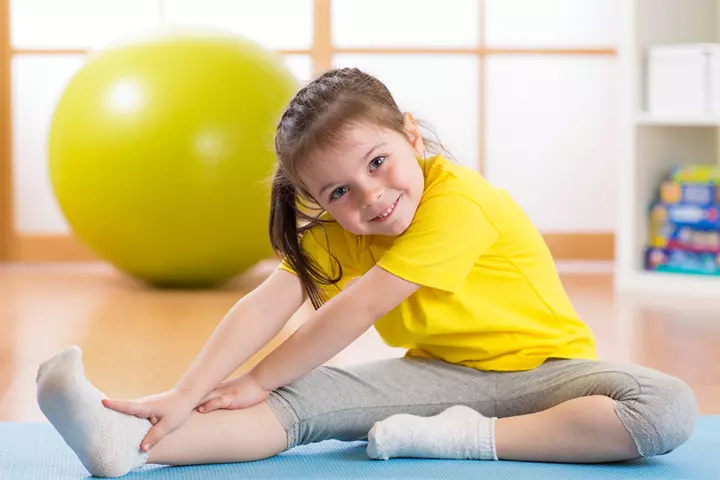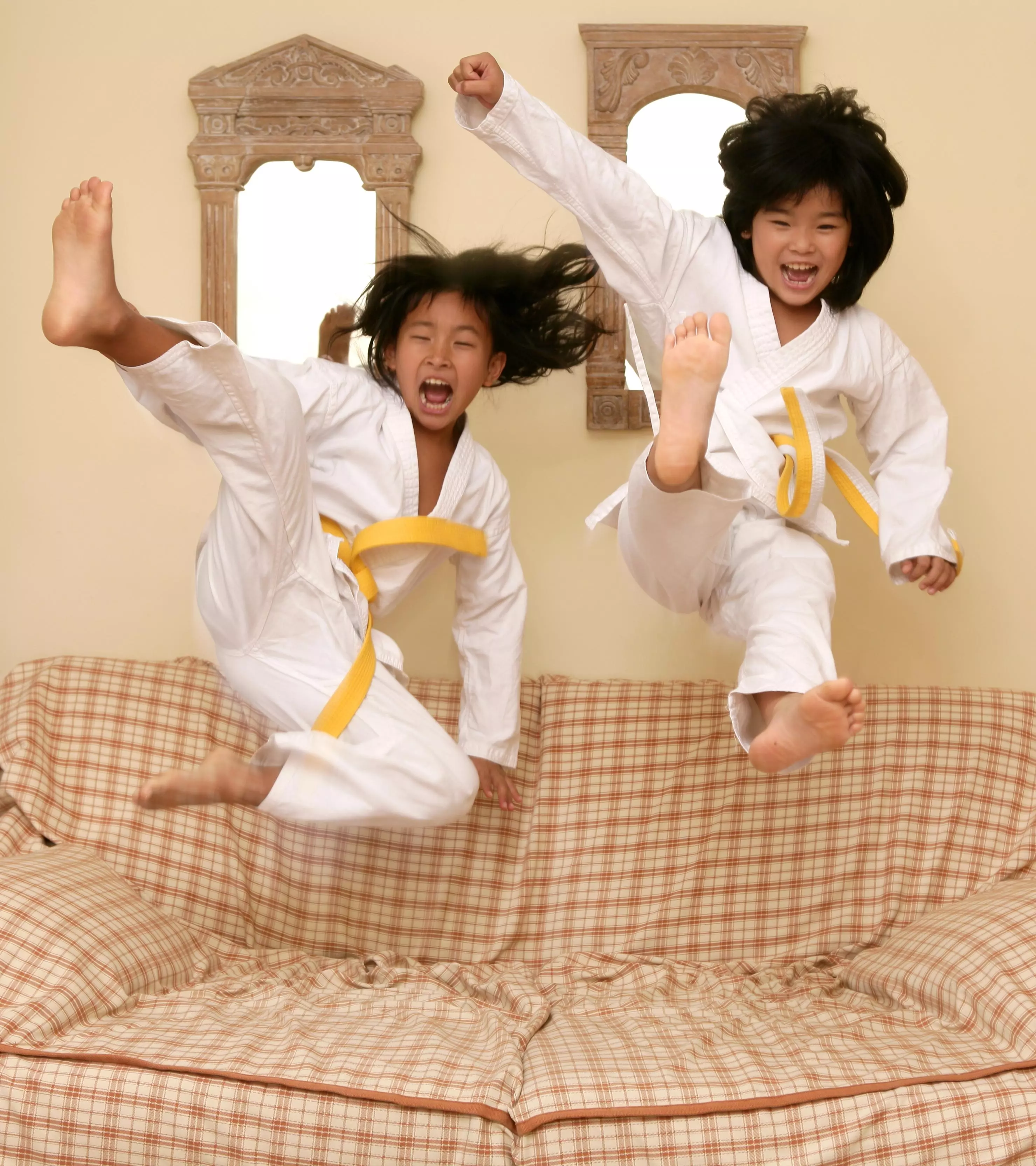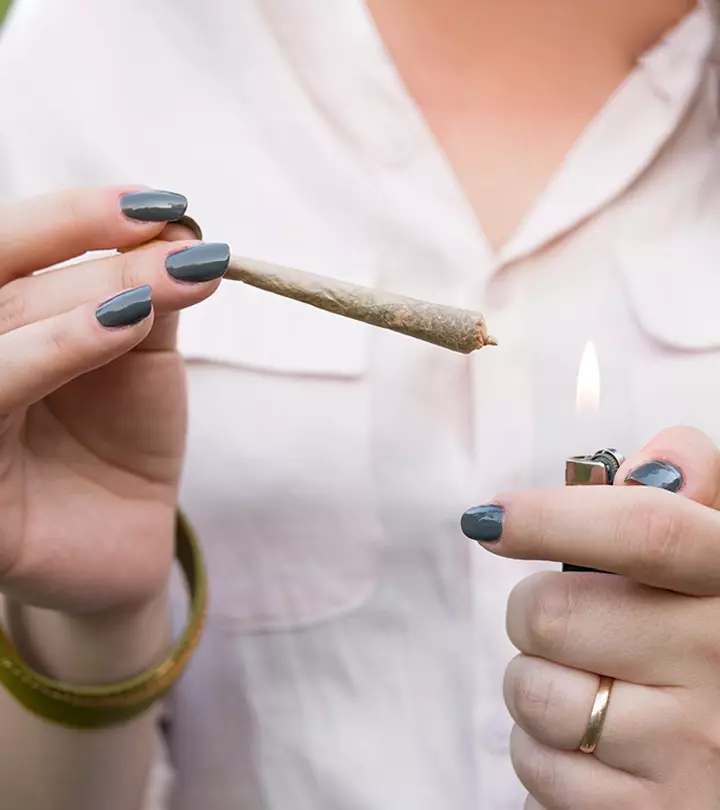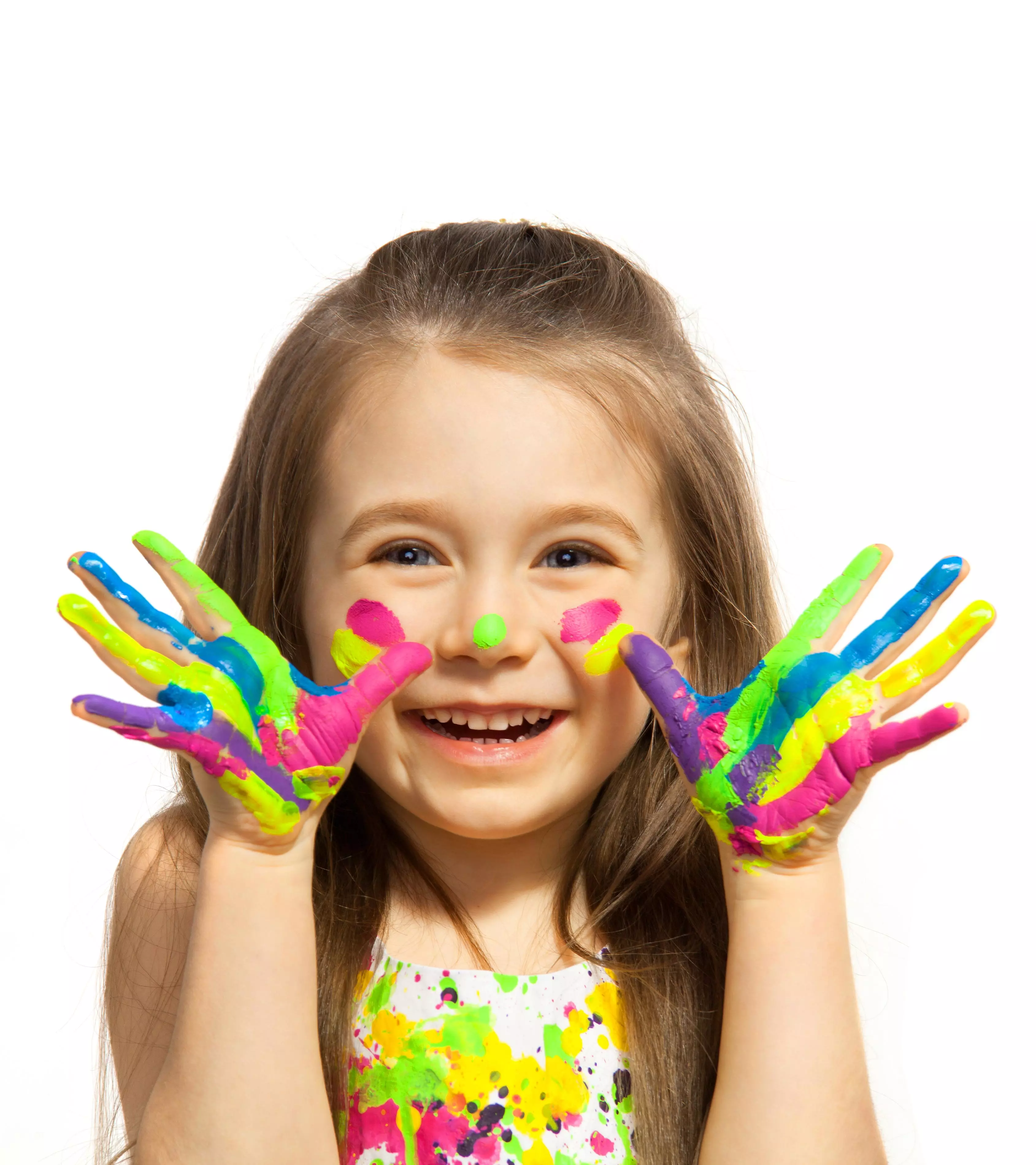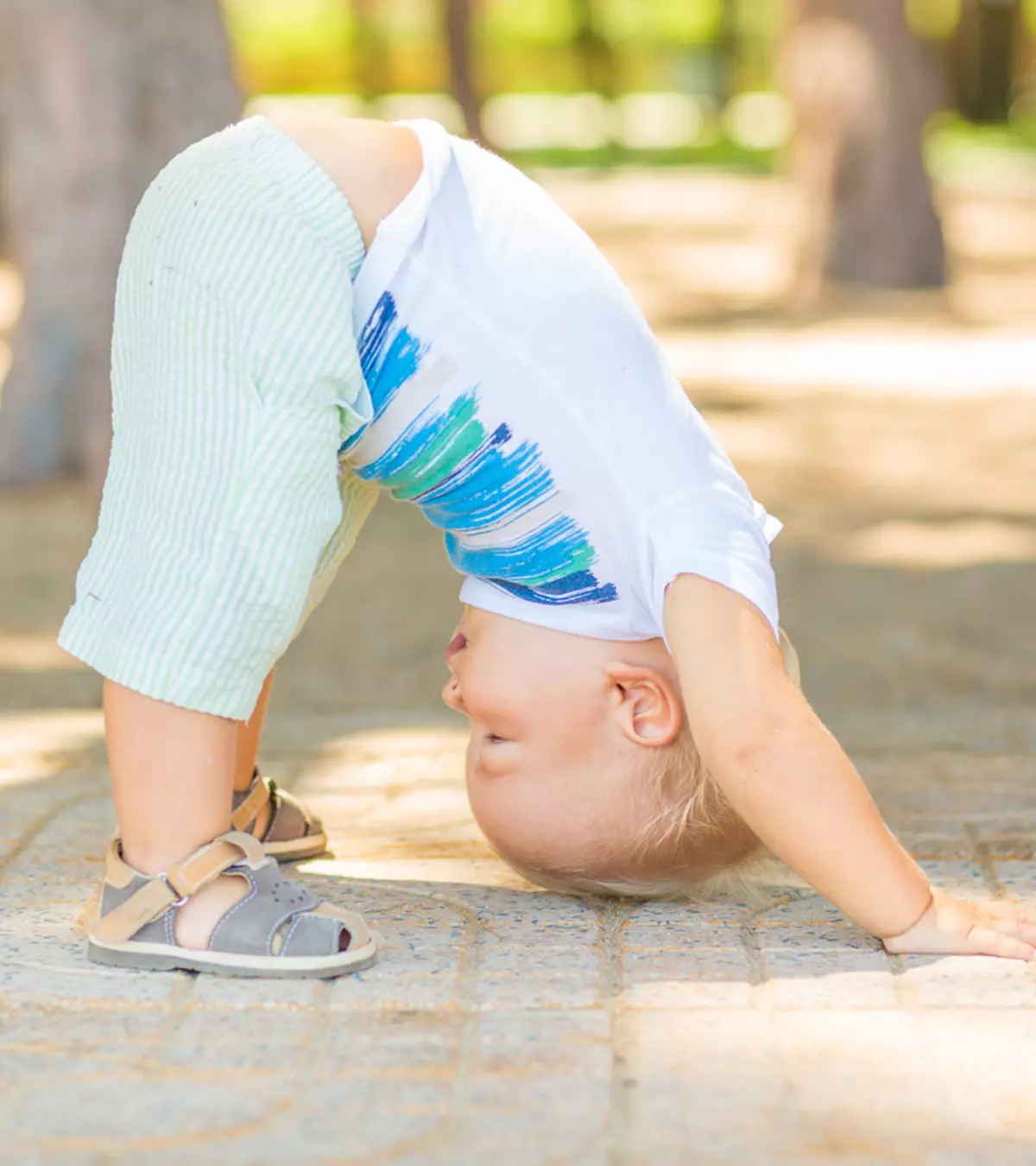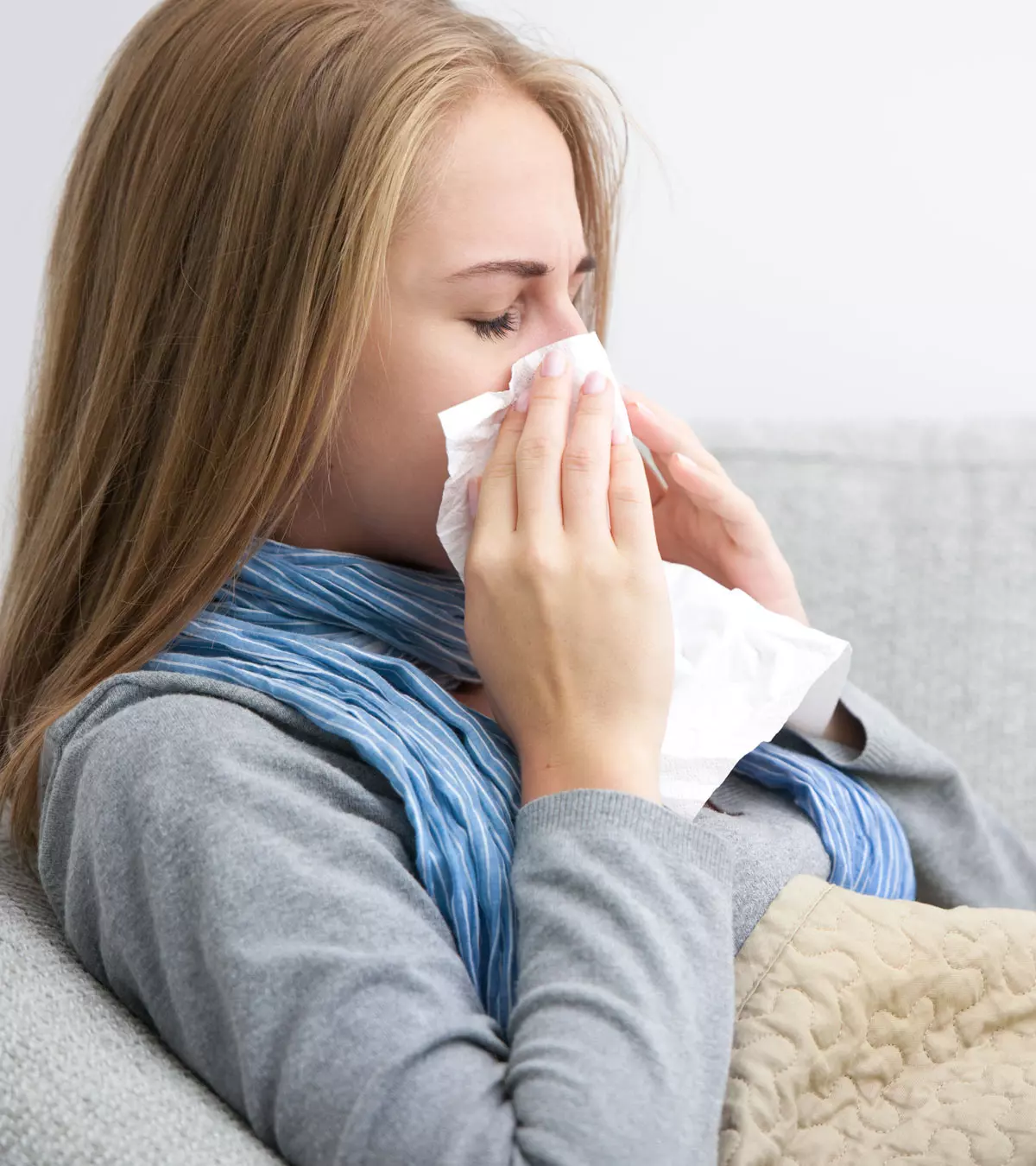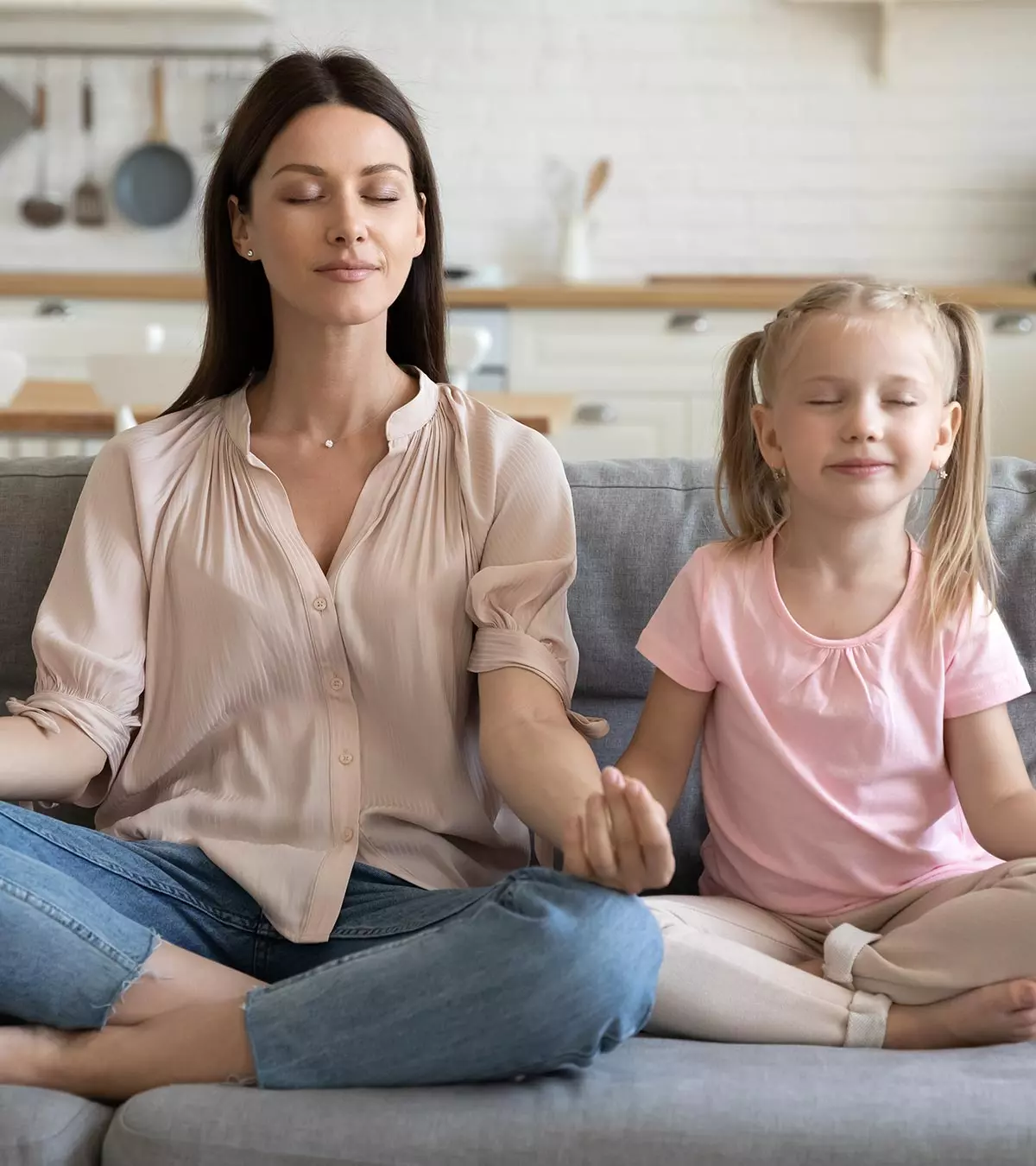

Image: Shutterstock
Mind–body techniques could help kids manage stress and help them regulate their emotions. Certain relaxation techniques are also used in the treatment of common health problems such as pain, headache, and bedwetting (enuresis), and to overcome habits such as nail-biting and thumb-sucking (1).
Most of these approaches require the participation of parents. You may use these techniques in addition to the treatment as recommended by a pediatrician to manage any clinical conditions in your child.
Read this post to know more about some proven relaxation techniques for kids and their benefits.
Relaxation Techniques For Kids
1. Deep breathing
Image: Shutterstock
Deep breathing can slow down the effects of stress response in the body. It helps to slow down the heart rate, reduces high blood pressure, and improves respiratory health.
This can be done by breathing in deeply, holding the breath for a few seconds, and breathing out slowly. Ask your kid to repeat it several times (2). Check to see if their belly moves more than their chest – belly breathing – by having them hold a hand on their belly button and one on their chest. See which one moves more.
2. Progressive muscle relaxation
Progressive muscle relaxation techniques can help your child to calm down. This is a method of tensing and relaxing the muscles from head to toe.
It includes:
- Face: You may ask your kid to squeeze their nose and forehead, like when they get a foul smell, and repeat it a few times.
- Jaws: Clench and release the jaw a few times.
- Arms and shoulders: Stretch the arms and raise them above the head a few times.
- Hands and arms: Move the palms and arms as they squeeze a smiley face stress ball.
- Stomach: Lie on the back and clench the abdominal muscles. Repeat it a few times, and then, try it in a standing position.
- Legs and feet: Press the toes against the floor and spread them while standing.
You may also ask your child to imagine and do an activity or pretend as though they are chewing a piece of gum, walking on sand, or squeezing a lemon. Progressive muscle relaxation could provide full-body relaxation and reduce anxiety (3).
3. Visual guided imagery
Visual guided imagery or visualization helps to reduce worries. You may ask your child to imagine any place where they would like to be or their favorite color. This could help reduce worries and calm your child’s mind.
You may add some soothing music or sounds that are related to the visuals. You can ask your child to imagine dancing in the rain, walking in a forest, or relaxing on a beach. Repeated use of the same visualization helps it become more effective.
You could also create a quiet and soothing atmosphere by using aroma candles or essential oil diffusers (3).
4. Laughing
Image: IStock
Laughing can help reduce stress and make your child feel relaxed. Humor could promote a learning environment. Your child may show an eagerness to learn if the study materials have fun elements in them. It may help to reduce anxiety and increase attention and motivation (4). You may try the following ways to make your child laugh:
- Reading comic books
- Watching funny cartoons
- Playing funny games
- Telling family-friendly jokes and funny stories
5. Stretching
Stretching helps children relax their muscles. Stretching before exercise or a sport could reduce the risk of muscle injury. Encourage your child to do some stretches between their study time, before bed, and in the morning (5).
You may also teach some yoga poses to them. It could give similar benefits as stretches and breathing exercises.
6. Exercising
Image: Shutterstock
Kids aged between five and 17 years require a minimum of 60 minutes of moderate to vigorous exercise per day to maintain good health if they do not have any limitations to do so (6).
The following tips may help you to ensure your little one’s safety during exercises:
- Use sun protection
- Stay well-hydrated
- Eat nutritious food
- Use proper shoes and equipment
If your child takes part in enough physical activities at their school, there is no requirement for additional work out at home. Never force them to exercise until they get exhausted.
7. Music
Music is an excellent way to calm your kid. Soothing music could reduce stress, increase the quality of sleep, reduce pain, and promote brain development. You may let them listen to their favorite calming songs or sounds.
Moreover, music may also help (7):
- Promote brain growth
- Improve language and mathematical skills
- Develop memory and concentration
- Improve social skills
- Increase attention
8. Meditation
Image: Shutterstock
You can teach simple meditation techniques that can be done at home or in the classroom if they feel stressed. You may teach simple breathing meditation techniques to your child by the age of four or more (8).
If your kid finds it difficult to meditate, you may try yoga-based techniques that involve moving (9). Meditation and yoga could help your child to feel relaxed. It may also help to increase concentration.
9. Cuddling
Cuddling is the best way to release stress. While cuddling or hugging, the body releases a hormone called oxytocin that reduces the levels of stress. You can encourage your kid to cuddle you, their siblings, or pets (10).
10. Toe tensing
Tensing and relaxing the toe can be a proper relaxation technique. Toe tensing before bedtime may help the child to have a good sleep.
You may ask your child to lie down on their back and move their toes gently towards them and relax them after a count of ten (11).
You may also try some interesting activities that are appropriate for their age. The following activities and games may also provide relaxation for your child:
- Bubble blowing
- Swimming or other water games
- Writing letters to family members
- Participating in cooking and gardening
- Dancing
- Painting
These activities can be relaxing for kids and can be easily done at home. You may restrict their screen time to less than two hours a day, and encourage them to take up these physical and mindfulness relaxation techniques.
You may also modify these techniques as per your kid’s age and requirements.
Benefits Of Relaxation Techniques For Kids
Mind–body relaxation techniques may provide the following benefits for kids:
- Reduce stress and anxiety
- Improve concentration
- Help improve sleep problems
- Reduce headaches and chronic pain
- Help in the management of enuresis, nail-biting, etc.
- May help improve respiratory health
- Promote physical and mental wellness
According to The American Academy of Pediatrics, teachers are advised to introduce mind-body relaxation techniques for kids as part of their school routine. Likewise, studies have demonstrated that alternative therapies such as yoga and meditation are beneficial in many ways to children and help reduce anxiety and stress in kids and teens. Moreover, introducing restorative mind-body relaxation techniques could help children bond with their peers while reaping health benefits. Therefore, you may encourage your child to participate in sports and extracurricular activities such as yoga, meditation, dance, and music that could help sustain good mental health and overall development.
References
1. C Hobbie; Relaxation Techniques for Children and Young People; Journal of pediatric health Care (1989).
2. Stress Management: Breathing Exercises for Relaxation; The C.S. Mott Children’s Hospital; The University of Michigan
3. Anxiety: Progressive Muscle Relaxation and Guided Imagery; The University of Rochester Medical Center (URMC)
4. Brandon M. Savage, et al.; Humor, laughter, learning, and health! A brief review; Advances in Physiology Education (2017).
5. Exercises: Stretching; Nationwide Children’s Hospital
6. Benefits of physical activity for children; healthdirect; Australian Government Department of Health
7. Musical benefits; Learning potential; Australian Government
8. Meditation: In Depth; The National Center for Complementary and Integrative Health
9. David Becker, et al.; Mind-Body Therapies in Children and Youth; The American Academy of Pediatrics (2016).
10. Cuddling Does Kids (and Parents) Good; Children’s Hospital Los Angeles
11. Sleep Disorders Relaxation Techniques; The University of Maryland Medical Center
Community Experiences
Join the conversation and become a part of our nurturing community! Share your stories, experiences, and insights to connect with fellow parents.
Read full bio of Katherine Paxton
Read full bio of Dr Bisny T. Joseph



